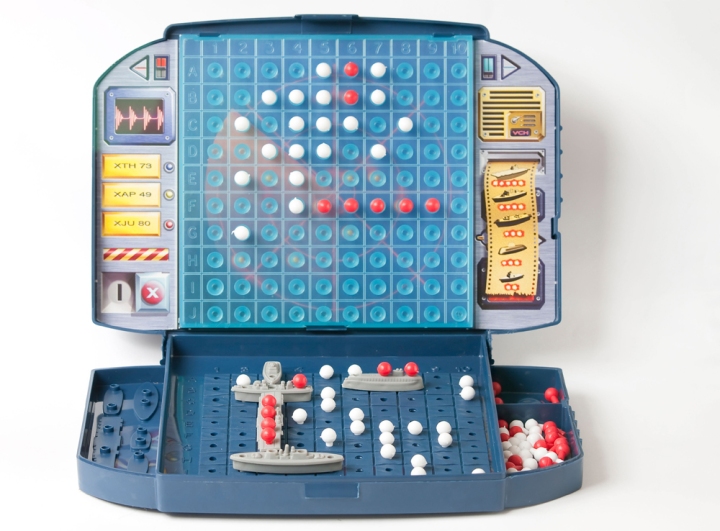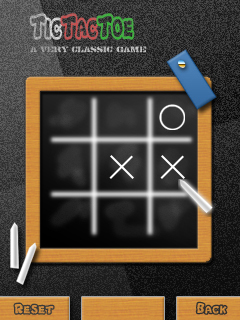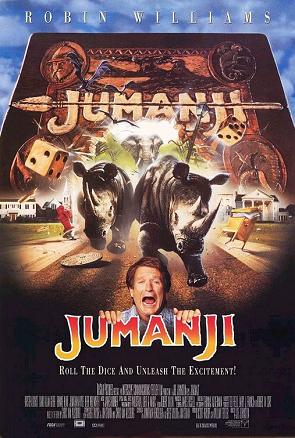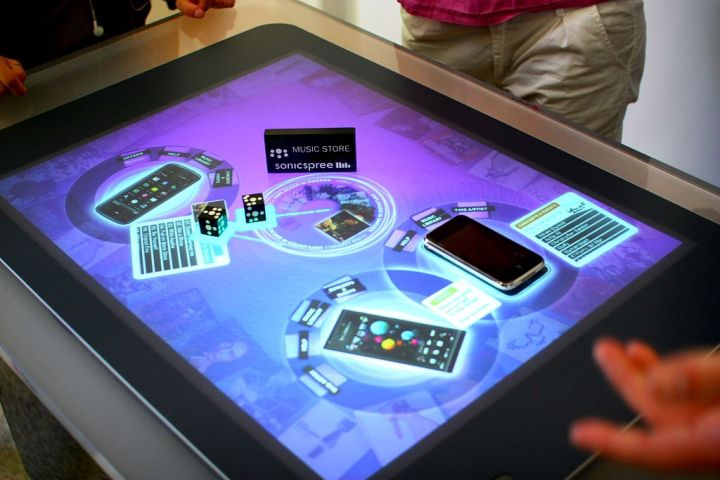Bismillaah…
Taufiq, Andik
andik.taufiq@gmail.com
Digital Media and Game Technology – School of Electrical Engineering and Informatics ITB
https://andiktaufiq.wordpress.com
Basically, everyone loves to play games. Children, adults, men, women, kids, teenagers, and even the elders have enjoyed playing games. It is because we are human which has to be claimed as the most creative creature in the world will naturally need a joy of life. In other words, we always need to get fun in every situation, along with our daily activities, all age segmentation, any places, and anytime, either in a form of a real gaming platform, or just killing the time purposes. Board games, one of the game platforms which has to be well-known for over centuries, has passed down from one generation to the next successor. Board games are quite unique. There are rules that must be obeyed by all of the players involved. That rules can be applied in almost all society’s culture in the world. That is why we can say that board games are universal. The interesting thing is any board games have a complete package of rules, domain, gameplay, and a set of artifact that must be applied strictly but never losing its fun factor. So that we can always categorize the board game players’ style based on behavior matters.
– Keywords: board games, rules, behavior.
- Introduction – Board Games
- Characteristics
- Domain
- Rules
- Goals
- Behavioral Study
- Strategy vs Chance
- Digital Media
-
Measurable
-
Artificial Intelligence
-
Human Interaction
- (Temporary) Conclusion
-
Board game is one of the long lasting games we have ever known. The starting purposes were simulating a real situation and simplify problems. And then it evolved becoming a fun basis entertainment platform.
-
Generally, board game is a turn-based game which can affect the user’s behavior. It is limited by domain, rules, and its playing methods. Cheating is automatically avoided. Once a player is cheating, then the rest gameplay will be not excited anymore.
-
If we compare between the old age board game versus today’s usage (digital platform), we can always find interesting differences. Normally, a classic board game presuppose players meet-up in one place and at one time. While on the digital platform, we do not have to meet each other. This kind of circumstances may cause different player’s behavior.
- Reference
By a simple definition, board games is a game platform which use a board and its artifact to play with. The board could be anything. A real board, top of the table, a floor, a piece of paper, or even a board metaphor screen in the digital world. Believe it or not, board games have been known from a long time ago. We can find the notes from any historical records which have been spread all over the world1.
There are two kinds of board games based on the number of its player, single player and multiplayer. Single player means the game is only can be played by one person. This kind of game has a very common typical characteristic like puzzles, riddles, brain games, and any other thinkable mini games. While multiplayer board games needs more than one player to begin with. The multiplayer type has so many variants, so many rules, and so many artifacts that have to be used. We often use a set of cards, a pair of dice, and even a bunch of artificial money to play multi-player board games. The point is multi-player type has more various equipment than the single player type, basically.
What about the complexity? None at all. Both of them is quite similar. Either single player or multi-player use the same simple logic to operate. Maybe this is the reason why board games are always so fun when playing it.
Domain is a set of problems of a board games so that we can not exceed the limitation that has been defined by its boundaries. For example, we can never make our pawn jumped outside a Chess board which has been set by international standard for the size of 8×8 square. We can never be allowed to increase the advantages of only one side party on the board, except cheating. This is the interesting part of board games. Everything has been set to a well-balanced domain. Every player has equal portion to make a move, to make a decision, and to get a chance.
Based on history, the board games were made to simplify the problems. Usually, we call it as a war strategic board. It is because the majority problem at that time was war cases, and every warring side should have simulated their strategic problems as effective as possible without losing its simplicity. And by then, it turned out te be so much interesting. A war simulation has become a playful toy. Using our creativity, we created more and more variants of this simulation. A complex problem became a simple one. Continuous parameters has become a discreet domain.

The very first basic rule defined on the board games is about the gameplay. Board games can only be played by using a turn-based rule. That means, there is always a time when a player run his/her step before or after the opponent’s or his own step on a single player type board games. Unlike the traditional field games (gobak sodor, benteng-bentengan, sepak tekong, petak umpet, boy-boyan, etc) which is run by parallel processes at the same time, board games run with the serial processes. The current step will become a previous step to the next step. And the next step will eventually become a previous step to the next upper-level step, and so on, until the game reaches its end. In other words, game over.
The rest of rules are derived from the turn-based method and the domain. It means, there always will be countable rules that can be defined. For example, we know that Tic-Tac-Toe is one of the simple board games. The size of the board is just 3×3 square. Each player has only 4 to 5 maximum steps to reach the final state, either lost, win or draw. Whatever happened, each player must put their items to the rest of the empty boxes only. And the player who capable creating a first line (horizontal, vertical, or diagonal) is obviously the winner.

Turn-based means the board game basically is not a real-time game. Except there are additional time-based rules that must be implemented. The most obvious example is Fast Chess with its various modes, such as: rapid chess (up to 60 minutes per player), blitz chess (maximum of 10 minutes per player), bullet chess (one to three minutes per side), lightning chess (a very fast movement, seconds for each move), and armageddon chess (a more complicated time-based rules). Usually, fast chess is using a digital time control to operate. Once a player becomes careless in a matter of time, then he/she must be defeated for sure.
Setting a goals state is the most important thing in a board games. Without the goals, any board games will get boring. Board games should have finite state of goals. Some games have the high level of difficulties and relatively taking a long time to finish it. Monopoly, Snake & Ladders, Checkers (Halma / Dam-daman), Othello are some examples of more complexes board games, and they are still have goals.
The point is, the goals of board games must be set, or the board games will become a very bored game. Just like Jumanji, a fiction movie about a mysterious board game whose can create real things in the real world by its power. Jumanji’s players have been trapped in its rules unless they can finish the goal alive. An interesting idea for a board game concept.

If we are talking about personal behavior of board game players, we can always set our mind to the well-structured instructions that must be obeyed by all players no matter what. Uniquely, cheating is the most avoided thing in this board games. Once a player is cheating, the rest of gameplay will not be excited anymore.
Basically, board games consist of three (3) type of playing methods: pure strategy5, pure luck / chance6, and the mixture of those two. In pure strategy game, victory is determined by two factors, autonomous decision making skills, and situational awareness of the player. So, thinking deeply is a much better than an inconsequent step for some complex board games, such as Chess, Bridge, or even Othello. There are times when a player becomes a master because of his/her experience. Experience is a set of structural logic that has been built on a board game player from time to time. The more often he/she plays the game, the more skills he/she gets. But, there are always some people who were born to be the talented person. We used to call it as a genius. This kind of person has a large set of logic. That is why it is not really strange if he/she is able to think several moves ahead, more than any average people can.
A pure chance game commonly used as just a compliment to leisure time, or gambling purposes. We can not fully control the results. Victory is determined based on pure luck for sure. Nothing we can do except enjoying the gameplay. This kind of game use a set of randomizing device, like dices, cards, coin, etc. An interesting popular example of pure luck board game is Snake & Ladder.

The most interesting playing method is a combination of pure strategy and pure chance. We can say that this kind of board game is the closest to the real condition but packed with a fun way of gameplay. In the matter of fact, in a real life, we can not control the fate, but we can still make some efforts to do so. That is the main approach of this type of board game. Bringing strategical real life situation to a discreet fun way using a platform of a board game. The one suited example is Monopoly. We can always see that there are dice which used as a randomize device. But we can always think strategically, what is the most prior considering our current money or assets. First-time buyers, a complex area possessor, the most expensive places hunter, or anything we want to be.

Nowadays, everything in a real life has become a digital metaphor. PC desktop, web environment, embedded system, digital TV, mobile platform, and any other physical devices have the capability of representing virtual simulation world, including board games. But first, we need to rethink, just remember board game itself is a simulation of a real world and some genres are using a simple logic analogy. So if we are going to create its digital version, that means we need to simulate the simulation. Secondly, talking about board game means we are discussing a game, not a serious simulation. It is just a bunch of fun-basis entertainment platform. The main purpose is just for fun, no more than that.
Fortunately, almost all things in a board game are measurable. Turn-based gameplay, the rules, the scope of domain, and its related parameters are programmable. The user’s behavior can be set to patterned and limited movements also. Whatever the players do in physical world, the rules has been set digitally. Cheating can be prohibited by system, unless there are physical occurences affected.
On a chance playing method board game, lucky number can be simulated by a random generator. In a digital world, a number is just a number. Every number in the range occupy equal portion on pseudo random. Is that random process represents the real situations? All we can do is just approaching those kind of circumstances. As a matter of fact, we can never define what is the real situations mean. We can never list all those deterministic factors in this world.
Another approach is by using artificial intelligence for representing a strategy playing method board game. On some digital board games, a player has the option to choose whether play with other players (multiplayer) or versus computer mode (single player). There are no differences, after all. The compatibility of the game level depends on how artificial intelligence applied. So, the player’s behavior is determined by how good the system can be interestingly simulated the real intelligence.
Comparing the old age of board games versus today’s usage is always interesting. One of the most visible difference is real platform versus digital platform, real items metaphor versus digital items metaphor. In a real platform, we have to meet each other in one place, at one time to play a board game. While, on the digital platform, we do not have to. This is the basic interaction model difference between real platform with digital.

Five years ago, we knew that there was a unique digital platform which can be a bridge to the real platform and digital gap. We used to call it Microsoft PixelSense7, formerly known as Microsoft Surface Table. This platform was well designed to handling multitouch interactions. The digital metaphors were only implemented on its contents. But physically this platform is a real top table hardware. By using this platform, we can do interact face to face with others in one place at one time in a digital way.

[1] http://en.wikipedia.org/wiki/Board_game
[2] http://www.theguardian.com/film/2012/apr/07/battleship-hasbro-adaptation-rihanna
[3] http://en.wikipedia.org/wiki/Jumanji
[4] http://warna-warni-esad.blogspot.com/2011/07/wisbencom-on-blogger_22.html
[5] http://en.wikipedia.org/wiki/Strategy_game
[6] http://en.wikipedia.org/wiki/Game_of_chance
[7] http://en.wikipedia.org/wiki/Microsoft_PixelSense
This post is a submission for BEC’s English Friday, theme: Childhood Memories, 15th topic: Children Games Now and Then. If you want to know more, please join us! 😀
My other English Blogging Club posts:
[EF#14] Sketching My Favorite Manga Character – Conan Edogawa
[EF#13] Bad Bad Bad Badminton
[EF#12] My Bio-Cycle Story
[EF#11] Eager to Wear Eiger
[EF#10] Indonesian Traditional Pastry and Cakes
[EF#9] Photography 101 Solitude Meet-up
[EF#8] Please Check Your Whensapp
[EF#7] The Story of Romance
[EF#6] ALTERnativE GOd given
[EF#5] Connecting the Dots
[EF#4] What if Nobita was a Genius
[EF#3] Gadget in a Pervasive World
[EF#2] The Wildest Dream: Becoming a President
[EF#1] Moving-On


Wow, very comprehensive article. It’s like the one which can be found in scientific journal. Great job!
LikeLiked by 1 person
Idem. Well done, Mas Andik!
LikeLiked by 2 people
Thank you… 🙂
LikeLike
lengkap.
jenis permainan ini emang gampang di mainin. saya dulu suka ludo, ular tangga, monopoli.
beberapa games malah dimainin pake alat yang sederhan, yaitu kertas dan pensil… cuma lupa namanya
https://jampang.wordpress.com/2014/10/03/nostalgia-permainan-ini-apa-namanya/
LikeLiked by 1 person
ya Bang… duh ane juga lupa he 😀
dulu kalo mau main tinggal bilang ayo main coret-coretan…
LikeLike
Things just get serious when someone brought up faculty name. More surprisingly, it’s same as my faculty O_O.
Saya harus belajar banyak sama kang Andik. The writing standard is high, adequate for journal. Maybe it can be found on IEEExplore hehe 😀
LikeLiked by 2 people
Ah, saya lupa nulis disclaimer kalo ini cuman paper wannabe.. hahaha… Saya malu bro, angkatan tuwir… 😀
LikeLike
Sudah tepat kok kang. Kalau paper beneran nanti pembacanya pusing hehe.
Tak apalah sudah senior. Banyak pengalaman yang bisa di-share 🙂
LikeLiked by 1 person
Aiksss, artikelnya puanjaaaanng dan keren. aku jadi terkagum-kagum sama level bahasa Inggrisnya *maap salah pokus*, tapi kalo board game, monpoli sama ular tangga idolaku waktu kecil, ah halma juga, kalo pion2 halmanya banyak hilang, main dam di papan catur, walau sebenarnya pengennya main catur aja, apa daya gak bisa.
Btw, ternyata satu almamater, angkatan berapa? *eh, salah pokus lagi*
LikeLiked by 1 person
Hehe.. memang selalu menarik pembahasan tentang board game ini Mbak, menurut saya lho ya… saya angkatan 2009… Mbak angkatan brp?
LikeLike
Hwaksssss, muda sekali…sebenarnya mau mundur, tapi karna udah di jawab….ehm, aku angkatan 2003, Geologi. 🙂
Salam kenal lagi, dunia ini yah terkadang memang begini, ketemunya malah di dunia maya. 🙂
LikeLiked by 1 person
Syipp Mbak… eh, blm tentu, krn yg saya sebut bukan angkatan S1… hehehe…
LikeLike
Wuoooo. It could be considered as a scientific journal Om. Cool article. How long did you search for references?
LikeLiked by 1 person
Actually, it can be as fast as turning our palm (membalik telapak tangan apa bhs inggrisnya ya), hehehe… tp krn byk kerjaan om, jdnya ga fokus
LikeLiked by 1 person
Nah gak tahu saya om frasenya apaan. Hehehehe.
Padahal ini detail loh. Hrs cari ref dulu.
LikeLiked by 1 person
Wow I never knew that campus has Digital Media & Game Technology class (or major?). Great articles!
LikeLiked by 1 person
I mean article (without s) hahaha oh well 😀
LikeLiked by 1 person
Hehe… yes, Digital Media and Game Technology is one of favorite master sub-majors under Electrical Engineering Department… 🙂
LikeLike
dolanan larang… aku ra paham 😦
LikeLiked by 1 person
isih larang gear kamerane njenengan ketoke… 😛
LikeLike
wkwkwkwkwkkkkk…..
ngguyune nyusul
LikeLiked by 1 person
I really like “Battleship Board Game”.. XD
LikeLiked by 1 person
Memang menarik konsepnya… war strategy game, tp dibikin konsep yg simpel
LikeLiked by 1 person
jadi kangen maen board game sambil makan di Kummara…
Keren banget mas Andik tulisannya soal board game ini
LikeLiked by 1 person
aku malah baru tau kummara 😀
LikeLike
Marvelous Mbah *thumbs up* your article almost like journal, it has abstract, intro, even reference 🙂 New perspective way of writing blog post and I think student can use it as paper study. The interesting thing of board game is using strategy and chance. My favorite game is othello but sometimes defeated by the PC *elah*
LikeLiked by 1 person
Thank you, bu dokter…
We can not always win against a computer because it has been programmed to think strategically based on a certain level and its database. Othello memang susah-susah-gampang. Sekali polanya ketebak ya sudah, semakin habislah kita. 😀
LikeLike
Aku paling seneng maen Get Rich.. Apalagi punya pendant yang oke. 😀
LikeLiked by 1 person
Kalo aku kyknya ga bs menikmati Beb, bukan apa-apa, ga sempat, hehehe
LikeLike